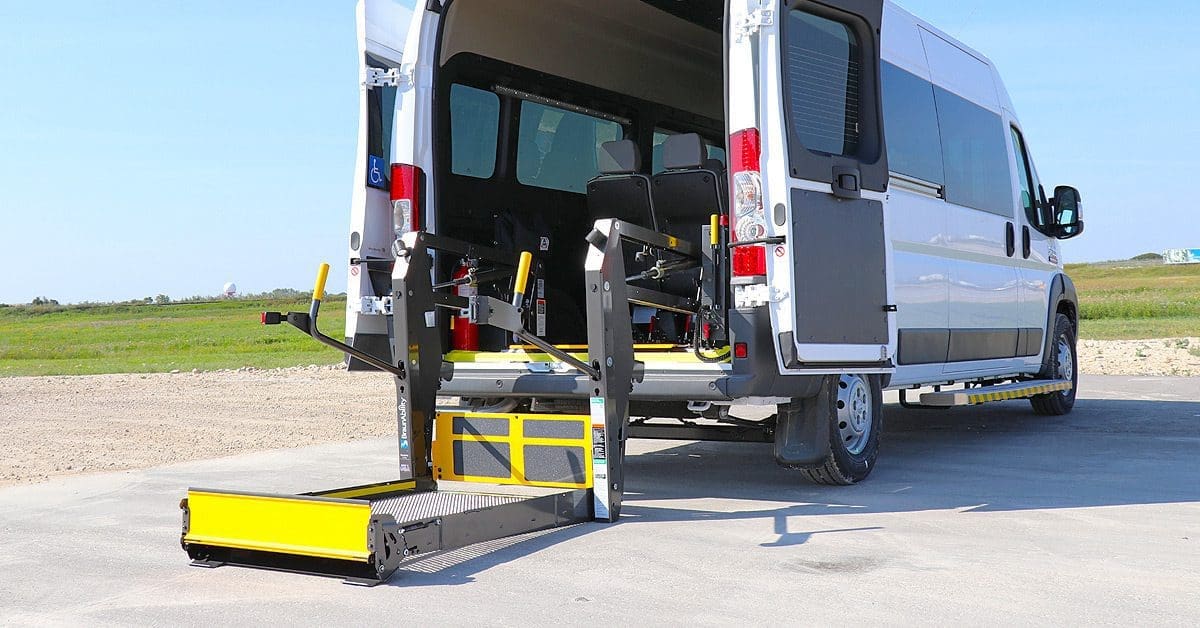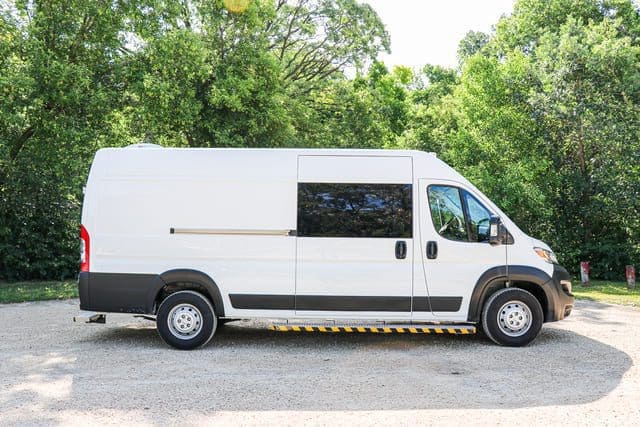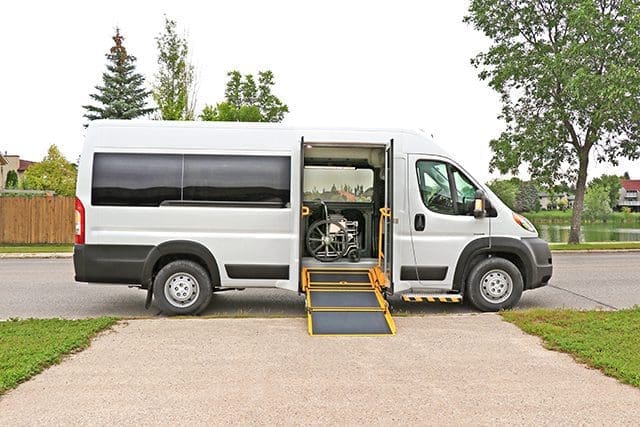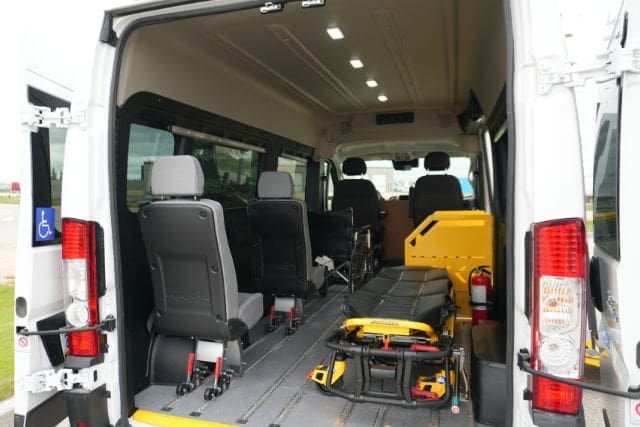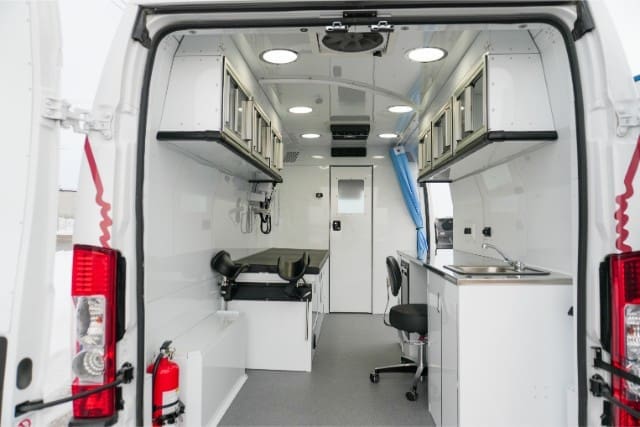A wheelchair lift is a convenient and safe way for passengers to enter and exit a van. But you could experience some problems with wheelchair lifts.
If your lift won’t unfold or suddenly stops moving while in use, this can cause added stress to your drivers, passengers, and organization.
What if your lift stops midair, and your client is unable to move until you figure out what the problem is? Or, what if the lift doesn’t unfold at all, and your clients are unable to make important outings such as doctor’s appointments?
To avoid these added stressors, you need to know what the top problems are with wheelchair lifts and how to troubleshoot them.
And that’s why in this article, you’ll learn the top 5 problems users experience with wheelchair lifts, along with five solutions to avoid these problems in the first place–and, ultimately, avoid added stress to your organization.
Note: Wheelchair lifts are among the most frequently serviced parts of a wheelchair van, but that doesn’t mean they are flawed or poorly designed–they just need more preventative maintenance to run smoothly.
Top 5 problems with wheelchair lifts (with 5 solutions)
There are a variety of factors that can cause wheelchair lift issues, but the most common one we see at MoveMobility is incorrect use.
1. Incorrect use activates safety features that halt the lift
Wheelchair lifts are designed with many safety features. While these safety features may cause frustration when they prevent the lift from working, they’re in place to avoid injury or harm to operators and passengers.
Without any safety features, such as the rollboard barrier, wheelchair lifts would be too unsafe for commercial transportation use.
Solution: Ensure safety catch hooks are not engaged
If your wheelchair lift won’t unfold, always make sure that the lift’s power is on. The power switch is located at the bottom of the pump module (see the diagram below).
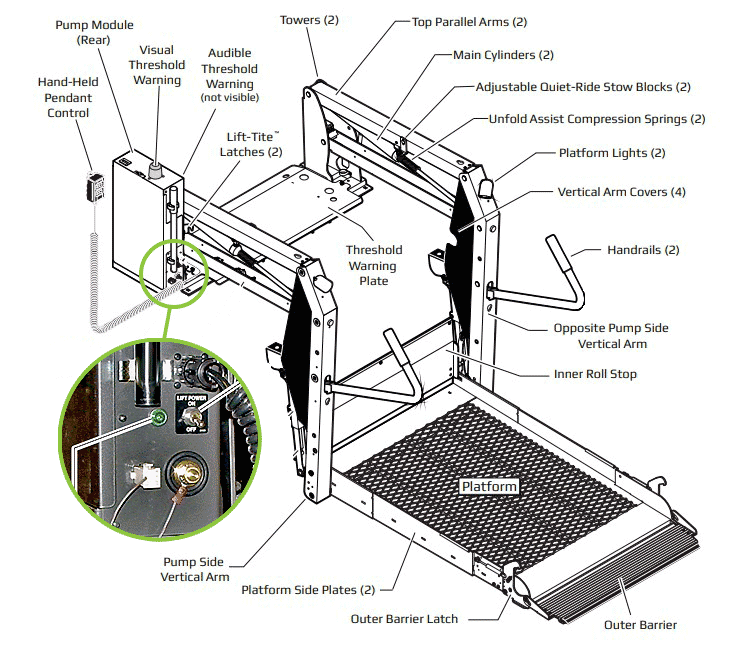
If the power is on, make sure the safety catch hooks aren’t caught on the lift. Safety catch hooks are a safety device that prevent the lift from suddenly deploying in the event of hydraulic failure. They should not be used to stow the lift during transportation.
Safety catch hooks are located on each side of the lift. To prevent improper use of the hooks, fold the lift completely into the van. Do not release the lift to catch it on the hooks. Once completely stowed, unfold the lift again.
Should the hand-held pendant not work and the lift not stow, use the manual backup pump to stow the lift completely to reset the safety catches.
Follow the steps in the video below to troubleshoot the lift if it does not unfold.
2. The lift stops moving while being raised or lowered
If the wheelchair lift stops moving while you are raising or lowering it, pressure on the inboard or outboard barriers may be preventing it from moving.
Inboard and outboard barriers are safety features that prevent the lift from moving if activated. When something is pressing against these barriers, it tells the lift that an object is too close to the edge of the lift, preventing its movement until the object is removed.
Solution: Make sure there’s no pressure on the outboard and inboard barriers
Check that a person or object is not putting pressure on the barriers, as shown in the video below. Objects such as luggage or wheelchairs leaning on the barriers are the most common reasons they get activated.
Watch the video below to troubleshoot whether the lift stops moving when raising or lowering.
3. The lift needs help to fold or is too slow
The unfold and fold buttons control the movement of the lift and are located on the hand-held pendant. After a few months of using a new wheelchair lift, users may find that the fold button doesn’t work. The folding may be slow, or the lift may need help to start folding.
Solution: Ensure no objects are activating the inboard/outboard barriers or adjust the safety valve
Check to make sure nothing is pressing on the inboard and outboard barriers (such as wheelchairs, limbs, and luggage).
If you need to adjust your safety valve, talk to our Customer Care Team now.
4. Hand-held control lights are off/unfold button does not work
Another issue you may run into with your wheelchair lift is that the lift control lights won’t illuminate and your unfold button won’t work properly. There’s a good chance that this will just be a power issue.
Solution: Ensure the power switch is set to on
Before operating the lift, ensure that the power switch located at the bottom of the pump box is set to on. A green light will display when the lift power is on. Use the manual backup pump to ensure the lift is fully stowed to reset all safety switches.
If the lights don’t illuminate when the power switch is set to on, there could be an electrical issue.
5. Lift is experiencing an electrical failure
In rare circumstances, your lift may experience electrical failure. For your safety, advanced systems in many wheelchair lifts allow the lift to detect an electrical failure and disable the lift from working.
Solution: Call our Customer Care Team
If you think your lift is experiencing an electrical failure, talk to our Customer Care Team today to diagnose the issue and schedule a repair.
Your next steps with MoveMobility
You came to this article either experiencing a problem with your wheelchair lift or to learn what kinds of problems can occur with wheelchair lifts.
If you’ve tried some or all of these solutions and your wheelchair lift is causing more headaches than convenience, it’s time to consider a change. Dealing with mid-air stops and lift-unfolding fiascos can stress your clients’ lives and your organization. Imagine a client stuck in midair or missing important appointments due to a stubborn lift on your wheelchair van.
Dealing with wheelchair lift problems could also bring serious consequences for your organization. If the lift malfunctions, it may lead to accidents that increase the potential for injuries and put your organization at legal risk.
It might be time to consider a new wheelchair van.
Benefits of choosing a new wheelchair van
There are various benefits to purchasing a new wheelchair van for your organization.
No more lift problems: Your clients will enjoy hassle-free transportation with a new wheelchair van. Say goodbye to the frustrations of lift malfunctions and mid-air stops, and hello to a smooth and reliable operation every time.
Increased reliability: Choose a new wheelchair van for improved reliability. With updated and modern components, such as AutoFloor, you can count on consistent performance. This will make sure your clients are satisfied during transit, and that leads to recurring business for your organization.
High ground clearance: Go anywhere with more confidence. Your new wheelchair van will have high ground clearance, which means it can handle bumpy roads and different surfaces while still remaining comfortable.
Quiet and smooth operation: New wheelchair vans are designed to be quiet and smooth. Less noise and smoother rides make every trip more pleasant for your clients. Upgrade to a new van for a calm and comfortable journey every time.
Take a look at other resources
Take a look at our article on the cost of a wheelchair van to give your organization a better idea about how much you can expect to pay. You can also watch the video below if you prefer to learn about it that way.
You should also browse through our article on your payment options with MoveMobility. This article highlights some of the different ways you can pay for your van.
Lastly, another helpful article to read is how much it costs to own a wheelchair van for 1 year. A quick read of this article will give you some insight into the average annual costs of a wheelchair van.
If you have any questions on lifts or are interested in a new wheelchair van, don’t hesitate to click the button below to reach out to our commercial mobility experts. The comfort and safety of you and your clients matter to us, and we want your journey to be smooth and stress-free.


